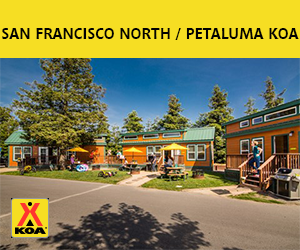Shasta Cascade Trinity

Get lost in the beauty of Upstate CA
In the far north of California lies the unspoiled wonderland of the Shasta Cascades region. Bordered by Oregon on the north and Nevada on the west, the area extends to the North Coast region and continues south to the Central Valley and High Sierra regions. From glistening lakes, world-class rivers, to volcanic landscapes the Shasta Cascade is the ultimate in outdoor recreation providing something for everyone to discover and enjoy.
A year-round outdoor enthusiast’s paradise without the crowds, the Shasta Cascade is home to every kind of recreation. This region offers a scenic venue for camping, hiking, road biking, mountain biking, hunting, fly fishing, swimming, boating, mountaineering, climbing, and waterskiing spring through fall. Winter brings snowshoeing, snowboarding, and downhill skiing. There are seven national forests in the Shasta Cascade area as well as the Lava Beds National Monument.
The centerpiece of the region is Mount Shasta, the second highest volcano in the continental United Sates. Mount Shasta is not connected to any other nearby mountains and rises abruptly an impressive 14,000 feet into the air. On a clear day it is visible from 150 miles away. To the south of Mt. Shasta lies man-made Shasta Lake, a mecca for house-boating and waterskiing with 370 miles of hidden shoreline to explore. Another gem of the area is Lassen Volcanic Park. In addition to Lassen Peak, the remarkable hydrothermal features of the park include roaring fumaroles (steam and volcanic-gas vents), thumping mud pots, boiling pools and steaming ground. Fishing is excellent on nearby expansive Eagle Lake, the second largest natural lake in California, known for its huge trout. For a look at the wild horses of Northeastern California, take a drive on the Buckhorn Back Country Byway, where visitors can see not only horses, but also hawks and golden eagles, deer and pronghorn antelope, and the beautiful scenery of the high desert of the Golden State.
Arts, music, museums and other urban amenities come alive in the cities and towns of the Shasta Cascade region. The civic “capital” of the area is Redding, the largest city of the region with a population of 89,861, according to the 2010 Census. Redding is proud of its 200+ restaurants that cater to all tastes. Other cities and towns include Alturas, Biggs, Chico, Dunsmuir, Mount Shasta, Red Bluff, Weaverville, Oroville, Weed, Fall River Mills, Burney, and Yreka. Chico is home to the world renowned Sierra Nevada Brewery. Weaverville contains the oldest, still in use Chinese Temple in California inside the Joss House State Park, and the Sam Lee Folk Art Center where you can view and purchase local and regional art.
Popular Destinations: Shasta Caverns, Turtle Bay, Yreka Historic District, Bidwell Mansion, Lava Beds National Monument, Burney Falls, Mossbrae Falls, Feather Falls, Thousand Lakes Wilderness, Castle Crags State Park, Whiskeytown National Recreation Area, Corning the olive capital of the US, and Tule Lake National Wildlife Refuge where guests can view the largest concentration of wintering bald eagles in the U.S.
HISTORY
The Shasta Cascade region was home to the Modoc, Maidu, Okwanuchu, Paiute, Shasta, Wintu, and Yana Native American tribes. The Redding area was occupied by the Wintu tribe from about the year 1000. The first Europeans in the region came to the area via the Siskiyou Trail in the 1820’s to 1830’s. The Siskiyou Trail was based on a network of ancient Native American footpaths connecting California and the Pacific Northwest. It is possible that Spanish explorers reached the southern edge of the area before 1820. The first non-Native American settlements in the area occurred when gold was discovered in Yreka and throughout Siskiyou and Trinity counties in 1851. The 1887 completion of the Central Pacific Railroad, brought a dramatic increase in tourism, lumbering, and population into the region. The early 1900s saw the influx of a large number of Italian immigrants to Mount Shasta and neighboring towns, most of who were employed in the timber industry. On May 22, 1915, an explosive eruption at Lassen Peak devastated nearby areas and rained volcanic ash as far away as 200 miles to the east. This explosion was the most powerful in a 1914-17 series of eruptions that were the last to occur in the Cascades before the 1980 eruption of Mt. St. Helens in Washington.





